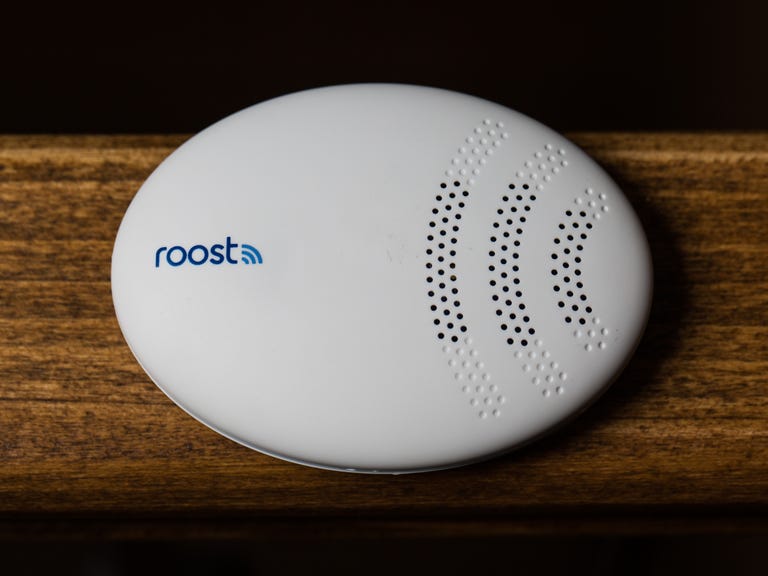 Why You Can Trust CNET
Why You Can Trust CNET Roost Smart Water Leak and Freeze Detector review: Roost makes a home in a flooded leak-detector market
This new leak detector gives you high-end features for a mid-range price.
The leak-detector market, ironically enough, is flooded with devices.
The Good
The Bad
The Bottom Line
Most of the gadgets have the same basic design -- two probes that set off an alarm when they're connected by water. So, it's tough for a new entry to rise above the rest, which makes it all the more surprising that one just did.
The Roost Smart Water Leak and Freeze Detector costs $50 (that's about £40 or AU$65), placing it firmly in the middle of the leak detector price range. But the Roost's design surprised me by working better than most of the devices at the high end of the market.
The Roost detector is feature rich, as far as flood sensors go. It has two probes, running parallel in a loop around the base of the device, to sense water. It also tracks humidity and temperature, graphing them so you can see trends over a 24-hour or seven-day period.
The coils on the bottom of the Roost extend its range, and they don't rest on the ground, like the otherwise-impressive Fibaro Flood Sensor. Since the coils are slightly suspended, the detector won't set off a false alarm when placed in a drip pan, or on a similarly conductive surface.
The Roost's biggest feature is its Wi-Fi connection. Sensors without a Wi-Fi connection, such as SmartThings and Wink, require a smart hub, which is a barrier to entry for many people. The two best sensors that do connect directly to your phone via Wi-Fi are both solid products, but they're more expensive -- the D-Link costs $60, and the Honeywell clocks in at $80.
Between an easy setup, a solid set of features, and Wi-Fi connection, the Roost seems like the best option on the market right now. But a few drawbacks keep it from total domination. First, it doesn't work with any major smart home platforms, such as Apple HomeKit or Google Home. This isn't the end of the world but it does mean you'll need to download another app, which is kind of annoying to keep on your phone for a passive monitoring device.
The holes on top of the Roost make it susceptible to water damage, although the bottom is watertight.
The second big drawback is that the Roost isn't waterproof. While the detector isn't a totally leaky bucket, it certainly lets water in through the alarm's top speaker holes. A few drops of water splashed on these holes while I was testing the Roost and the alarm kept going off for nearly an hour -- even after I'd removed it from the water. More worryingly, the Roost sensor won't survive being submerged. So it's a one-shot deal in the case of serious flooding.
Despite its weaknesses, the Roost's strong design and feature-rich interface -- all for a comparably low price -- make it one of the most appealing devices on the market. If you don't already own a smart home hub, then the Roost and the D-Link should be the top two contenders for your flood sensor of choice.


